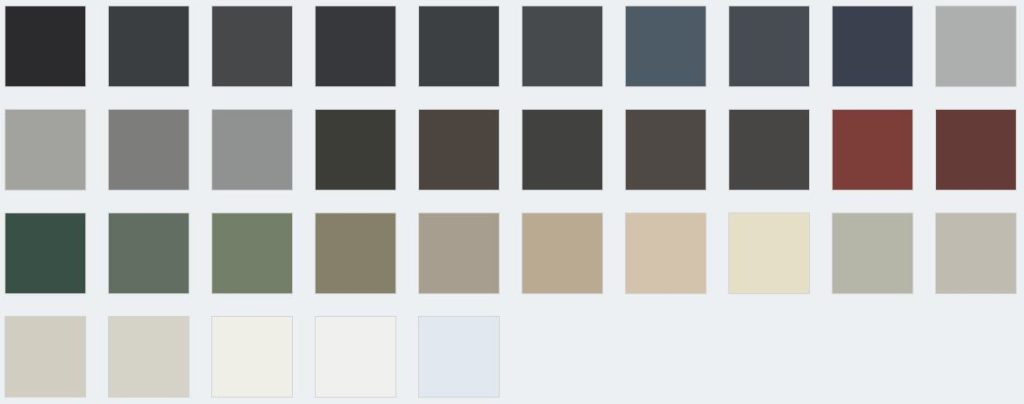Anodised or Powdercoated Window Joinery?
How can you tell the difference between anodised or powdercoated window joinery?
When you are restoring and coating your faded window frames you need to determine whether it is anodised or powder coated window joinery.
Anodised or Powdercoated Joinery? – The difference for an Everbrite Coating application is that Anodised Joinery needs to be solvent wiped with methylated spirits immediately before applying the first coat of Everbrite. This solvent wipe helps with the adherence of the coating as an Anodised metal has a smoother finish than that of a Powder Coated metal. There is no requirement to solvent wipe Powder Coated metal prior to coating application.
Click here To watch Video demonstration on how to apply Everbrite to window joinery.
You will find out more information by reading the page about Powder Coated Metals
How can you tell the difference visually?
Anodised joinery looks smoother than powdercoated joinery and maintains the beauty and natural metallic lustre of aluminium. Whereas Powdercoated joinery looks more like a smooth paint finish and when oxidised/faded has a chalky appearance.
Anodised Joinery
Anodised looks smoother and more like a coloured metal. This photo shows an anodised window that has been coated in Everbrite.
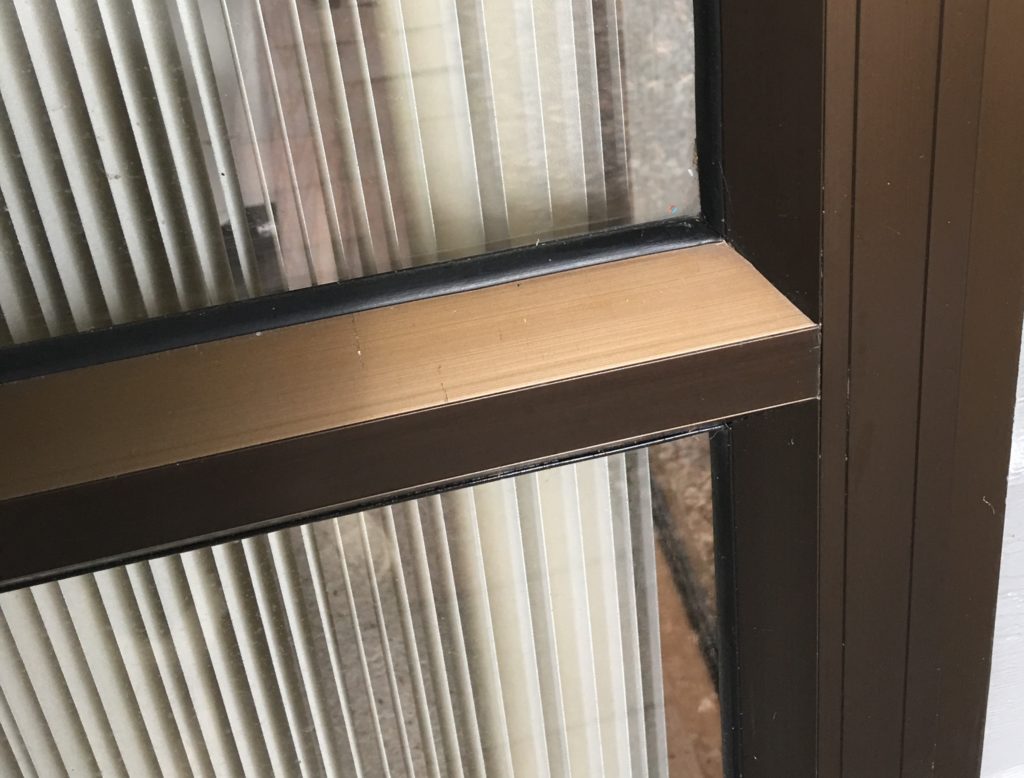
Powdercoated Joinery
Powdercoated metals look more chalky and faded when oxidised. This photo shows a window prior to being restored with Everbrite.
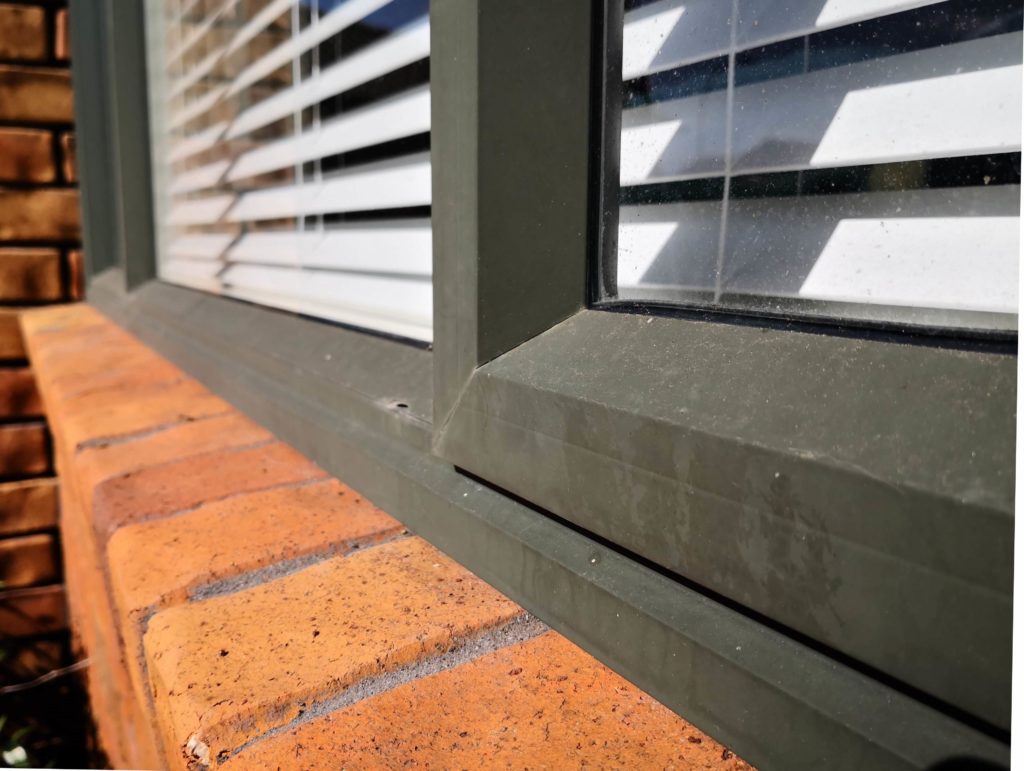
Anodised Aluminium door
Anodised looks smoother and more like a coloured metal.
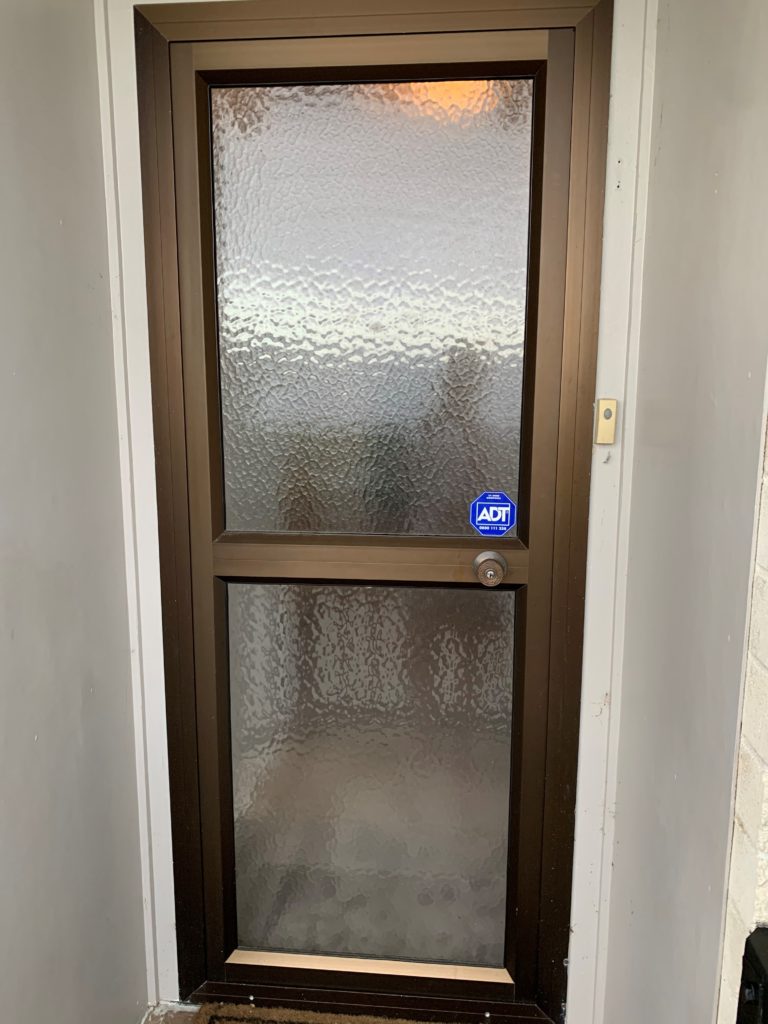
Powder coated doors
Powdercoated metals look more chalky and faded when oxidised.
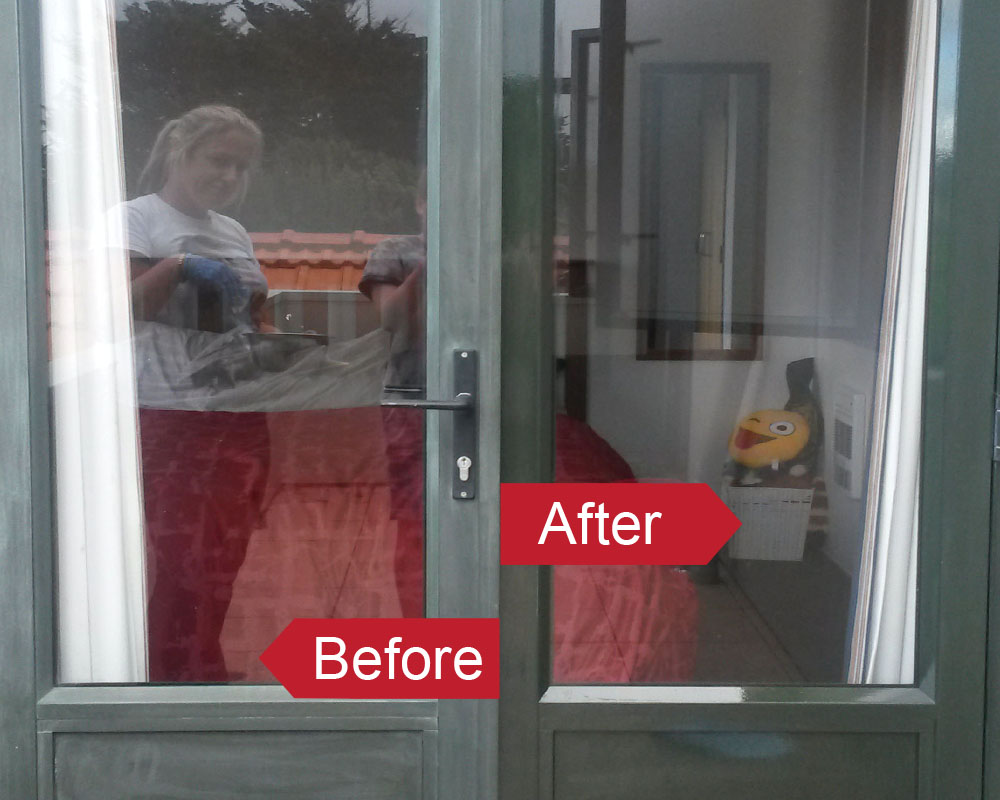
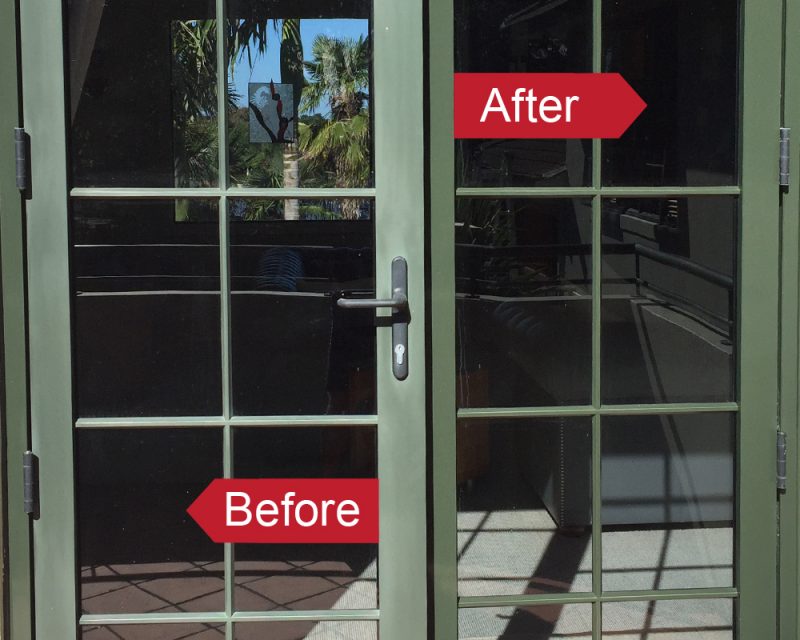
Aluminium surface treatment – Anodising vs Powder coating
Mother Earth’s most plentiful metal is renowned for its lightness, strength, and resistance to corrosion but there are valid reasons to treat the surface of aluminium profiles. Surface treatments provide colour and reflectivity, increases corrosion resistance and hardness and reduces wear and tear.
Anodised Aluminium
Anodising is an electrochemical process, used to increase the thickness of the natural oxide layer on the surface of aluminium. Anodising is an integral finish, that cannot flake, peel or blister. Anodising is more durable and about a thousand times thicker than the thin oxide layer naturally formed on aluminium. While it is unaffected by sunlight and mostly fade-resistant it can become vulnerable to acidic pollutants in urban areas. There are less colours available compared to Powdercoatings .
Examples Anodised colours
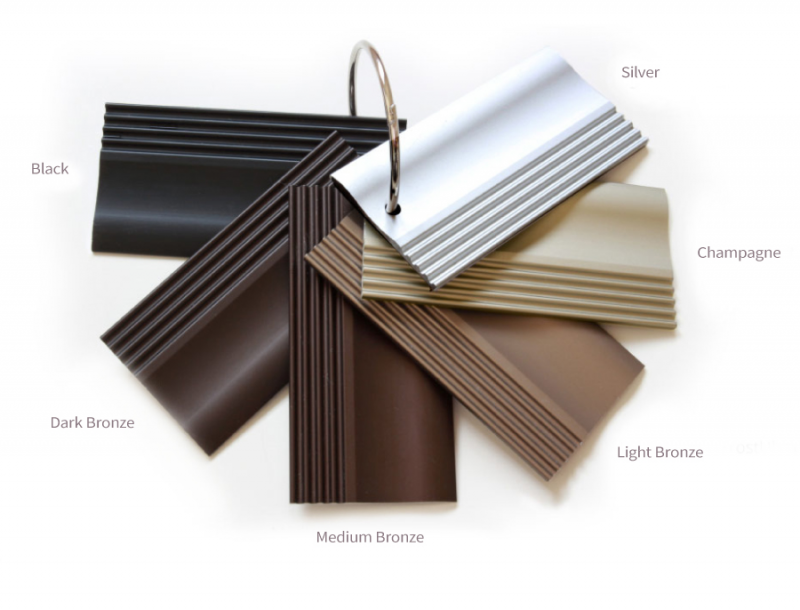
Powder coated Aluminium
Powder coating is a mixture of finely milled resin and pigment which is sprayed on to the aluminium extrusion, and then it is fused into a smooth coating in a curing oven.
It is can be affected by sunlight and subject to colour fade and chalking; which looks like white powder on the surface. Excessive chalking may appear if the incorrect curing process was used. There are more colours available compared to Anodised surface treatments.
Examples Powder coating colours
